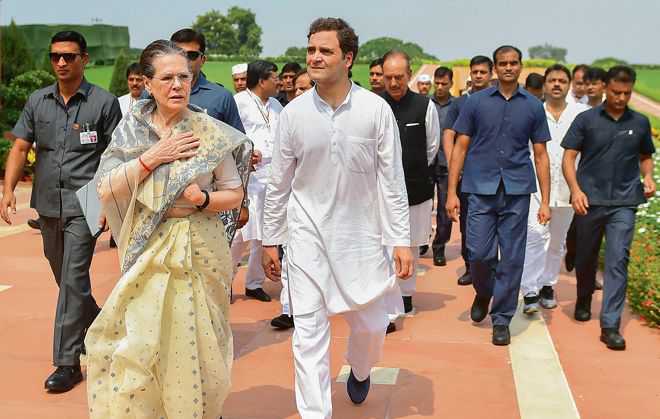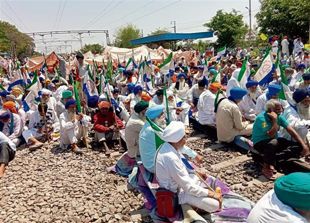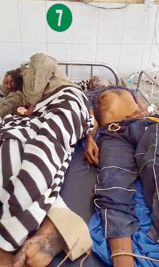
Threat Perception: Withdrawal of security cover should be done after proper review.
Vikash Narain Rai
Former Director, National Police Academy, Hyderabad
There are indications to suggest, from the past and present, that like the first withdrawal of Special Protection Group (SPG) security cover from the Gandhi family in January 1990, even the second withdrawal of November 2019 is not exactly rooted in the lowering of threat perception. An expert committee had decided on December 4, 1989 that the SPG cover must continue with Rajiv Gandhi and his immediate family members (Sonia, Rahul, Priyanka) unless a change was warranted by a fresh threat perception. Yet, without any such exercise, the cover was arbitrarily withdrawn, opening the way for a tragic chapter in India’s political history.
The first curious thing about the present withdrawal is its timing — the cover has been withdrawn within a short span of the first death anniversary of Atal Bihari Vajpayee, who had lived with the SPG cover long after ceasing to be an active politician with no positional or ideological threat. As a former prime minister, his continuation with the SPG cover had three identifiable phases. Initially, it was an intelligence-backed necessity under the SPG Act, then it became an extended political courtesy under Manmohan Singh's second UPA regime, and finally, it assumed the character of a political expediency under the Narendra Modi government. Obviously, it would have looked ridiculous to withdraw the SPG cover from the politically active Congress family while still continuing with the BJP icon’s cover.
The second indication that something was amiss in the withdrawal comes from the unchanged status of the politically sensitive positioning of the Gandhi family that will always pitch them as a target of the extreme communal and ultra-national ideologies. Under the amended SPG Act, former prime ministers and their family members are to be extended the SPG cover annually, based on their threat perception. The Gandhi family which qualified for the SPG cover under this category for 28 years has now lost it, though nothing has changed since the last year in their political positioning to warrant the abrupt negative review.
Of the 12 years that I spent with the SPG in two stints (1987-92 and 1996-2003), the last three were dedicated to the training wing. It was natural that the assassinations of Indira Gandhi and Rajiv Gandhi formed the backdrop of strategic considerations all along. Indira's assassination in October, 1984 as PM had necessitated the creation of the SPG for providing a specialised cover to the incumbent prime ministers and their immediate family members, while Rajiv's former PM status at the time of his assassination in May, 1991 had hurried the Parliament to amend the SPG Act in order to extend the protection of the SPG to former PMs and their immediate family members as well.
Now, with the sum and substance of the threat remaining at the same pitch, the Gandhi family still at the pinnacle of the Congress party, it becomes a debatable gamble to tinker with a time-tested security cover.
That brings up the third and the most dangerous fallacy, a professional one, hidden in the contours of the present exercise: the imposition of the concept of interchangeability of security covers. How fragile this concept was had been amply demonstrated in Rajiv’s assassination! And yet, the Gandhi family has now been saddled with a Z-plus category of security in lieu of the SPG cover. It is not my case that one security cover is inferior to the other or one security agency is better than the other, but what is generalised is no match to what is customised in the given context.
The concept behind ensuring a failproof personal security paraphernalia for a national leader in a democratic set-up is way deeper than the amalgamation of several layered cordons, the prohibitive armours, the elaborate ground layouts, the technical sanitisation, the drone monitoring, the traffic restrictions etc. What is visible to the naked eye may amount to be, when the time of reckoning arrives, the worth of an ornamental ivory tooth only. The crux is that each security element must be a combination of protective and facilitative features and the thoughtful anticipation must match any possible precipitation. The security covers are breached not by attacking and breaking the hard shells but by identifying and puncturing the soft belly.
As there is no end to human ingenuity, no personal security cover, howsoever specialised it might be, can have inherent claims to infallibility. Its strength lies in assessing and evolving continuously. US President John Kennedy, travelling in a fortified motorcade, fell to a long-distance assassin’s bullets in 1963 in Dallas, Texas. President Ronald Reagan was saved from a gun attack from close quarters in 1981 while emerging from a protected hotel building in Washington, DC. Israelis, who took pride in laying out flawless security drills for their political leaders, lost their Prime Minister Yitzhak Rabin in 1995 to the bullets of an assassin, lurking at the controlled departure point after a rally in Tel Aviv. Rajiv Gandhi himself, while as PM and under SPG cover, escaped an attempt on his life at Rajghat in 1986 and also suffered a rifle-butt assault by a Sri Lankan sailor while inspecting a guard of honour at President House in Colombo in 1987.
To recall how the Justice JS Verma Commission of Inquiry had summarised the lapses that led to the assassination of Rajiv Gandhi at Sriperumbudur, Tamil Nadu, the judge had rejected the contention that Rajiv was not entitled to SPG protection since at the time it was not supposed to guard former prime ministers. “A way could and should have been found,” he had concluded. Apart from listing the specific security shortcomings in his report, he had come down heavily on the approach of the MHA and the IB for bouncing notes at each other and sending out memos warning of threats, but not taking a single concrete step and leaving him at the mercy of a police force that was not good enough and party men who were interested in encashing his popularity but did nothing to ensure his safety.
The Verma report submitted in June, 1992, was then buried in the ongoing noise over the Ayodhya conflict. This time around, ironically, the implications of the withdrawal of the SPG cover from the Gandhi family have not surfaced much, understandably, in the political buoyancy of the Ayodhya resolution. Ayodhya may have been just incidental in downplaying the security concerns at hand, but let it be reiterated that the politicians of the stature of the Gandhi family will continue to face a serious threat of personal harm from desperate quarters because the politics they represent cannot be wished away any time soon.



























